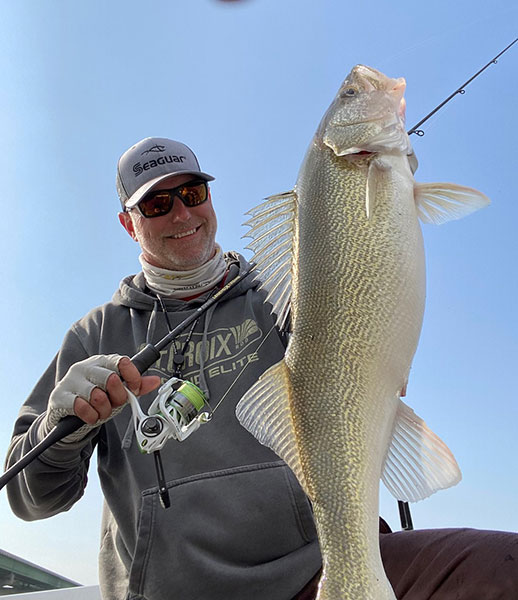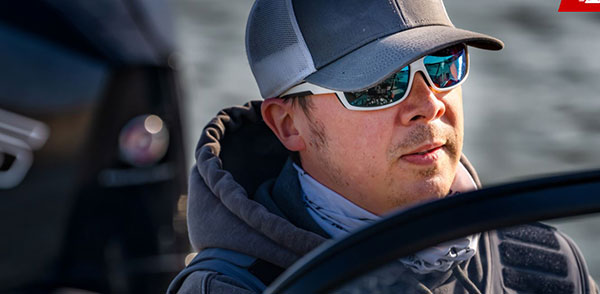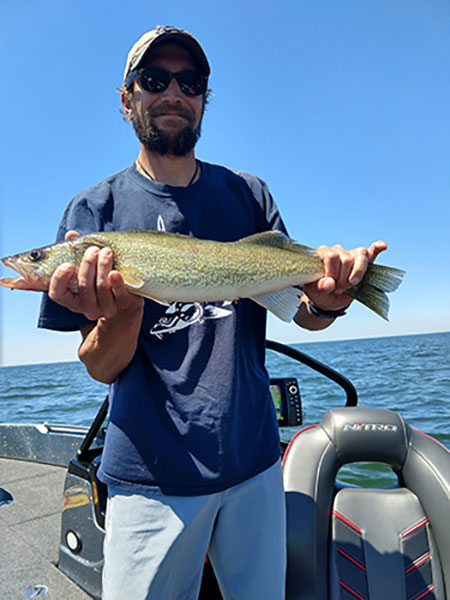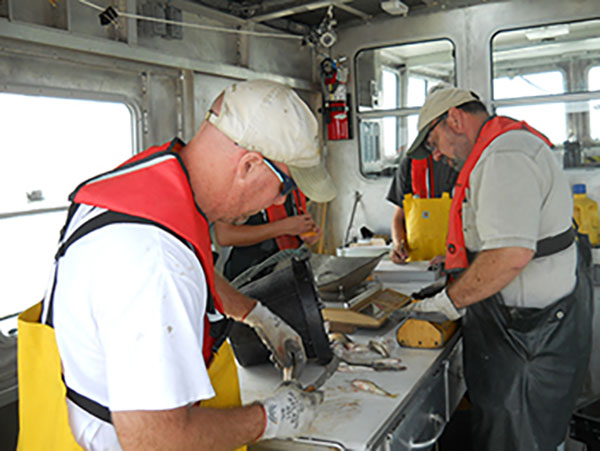- Details
Springtime has arrived throughout all but the uppermost reaches of North America, ushering in some of the best angling of the year for everything from perch to pike.
It’s an exciting time for all anglers, but particularly so for anyone targeting mobs of migrating walleyes headed to their predictable pre-spawn and spawn locations. This game is played wherever walleyes are found, but the big-league action takes place in a handful of premier systems. Walleye factories like the Mississippi River, Lake Erie and the Detroit River, Saginaw Bay in Michigan, the Missouri River, Wisconsin’s Green Bay – including the Menominee and Fox Rivers – and Northern Minnesota’s Rainy River represent a few of the premier arenas.
We asked two top walleye guides, Brian Bashore and Tony Roach, to share their favorite presentations for targeting springtime ‘eyes.
Brian Bashore
 Brian Bashore
Brian Bashore
The Missouri River is prolific walleye water. Just ask Sioux Falls, South Dakota NWT tournament pro and guide, Brian Bashore. The St. Croix pro-staffer and co-owner of The Walleye Guys Guide Service says the mighty Mo near Chamberlain, South Dakota is the place to be once the ice clears from the river.
“There’s about a five-mile section of the river in Chamberlain that’s loaded with rocks and prime spawning habitat,” Bashore says. “The main channel loads up with males first, and as the weather warms they start sliding up shallow. This area of the river stays hot from the pre-spawn – which can start as early as late February through mid-March – all the way through the post-spawn period.”
Bashore says guides and other anglers in the know start the early season by dredging the main river channel with heavy jigs or bottom-bouncer rigs. “A lot of fish are caught in 20-30 feet of water out in the main channel early,” he says, adding that dragging a bottom-bouncer rigged with a live minnow is one of the better ways to target them. “You’re pretty much just drifting or slipping with the current, moving along anywhere from around .5 to 1.2 MPH. I’ll often drag a bottom bouncer rig because it keeps the minnow in the strike zone just above the bottom, and you don’t foul your hook with the slime that collects on the bottom over the winter. I’m typically spooled up with 15-pound Seaguar Smackdown braid and fishing a 10-pound Seaguar Gold Label fluorocarbon leader.”
- Details
Mercury Report
 Mercury Pro Team member Tom Huynh
Mercury Pro Team member Tom Huynh
Two years ago, in the midst of a pandemic, Mercury Pro Team member Tom Huynh entered his first walleye tournament on a whim with friend and campground neighbor Nate Wolske.
While Huynh considers many traditional walleye methods to be monotonous, the competitive fire burned, and this Anglers Insight Marketing (AIM®) Weekend Walleye Series Minnesota Division event on Leech Lake represented an opportunity to try something new. Fast forward to 2022 and Huynh is now widely considered the hottest professional walleye angler in the sport. While Huynh’s success in such a short time frame is astounding, his journey to the sport’s summit is even more perplexing.
For starters, the 42-year-old grew up not in the heart of walleye country in North Dakota, Minnesota or Wisconsin, but in Charlotte, Arkansas, where his family operated a small cattle farm. As a child, he fished for catfish, panfish and an occasional bass. It was catching those bass that first piqued his interest.
“We did have little largemouth bass in our clay-colored farm ponds,” recalled Huynh. “I would walk the bank and work the edges with a Mepps® spinner. The older I got, the more I wanted to bass fish. It was more intriguing to me – working a bait instead of just sitting and waiting for a catfish to come to me. Growing up, we didn’t have much for TV, but the few channels we could get had fishing shows on weekend mornings, including bass tournaments.”
In 1999, after two years at Arkansas State, Huynh moved to the Fargo-Moorhead area on the North Dakota-Minnesota border to study computer information systems at Minnesota State University Moorhead. To help fund his education, he took a job in a nail salon. While Huynh finished college and earned his degree, he discovered a true talent with nail art. Today, Huynh owns and operates two Polished Nail Spa locations in Fargo, where he employs 27 nail technicians.
- Details
MDNR Report
 Saginaw walleye
Saginaw walleye
Effective Jan. 1, 2023, the possession season for walleye will be open year-round on the lower Saginaw River in Bay and Saginaw counties from the mouth of the river, upstream to West Center Street (Douglas G. Schenk) Bridge.
The same regulation is in effect on the Lake Huron waters of MH-4 (see page 20 of the 2022 fishing guide) including Saginaw Bay. The daily possession limit for walleye remains at eight walleye with a 13-inch minimum size limit on these same waters.
The Michigan Natural Resources Commission approved this regulation Dec. 9, 2021, to increase fishing and harvest opportunities on the Saginaw Bay walleye population. Prior to this new regulation, the season used to close March 16 and reopen the last Saturday in April.
- Details
MDNR Report
 DNR Biologists
DNR Biologists
Based on the 24 trawl tows and 16 gillnet lifts conducted in September by the Department’s R/V Tanner and Channel Cat, initial findings indicate few changes to the Saginaw Bay fishery.
Overall, a total of 24 different species were collected by trawling and 27 different species were collected by gillnetting, with no new species collected.
Walleye abundance appears strong, and there are large year classes being documented from 2021 and 2022. Observations of a strong 2021-year class were supported by a large catch of juvenile walleye ranging in size from 10 to 12 inches. The evidence supporting the predicted strong 2019-year class will have to wait until all specimens can be aged in the laboratory this winter. Overall, the mean catch of larger walleye in gillnets (36.6/net) was slightly higher than the average (33.8/net) since 2003. The mean catch of young-of-year walleye in trawls was the highest since 2009, and second highest ever, indicating young walleye production remains very high.





